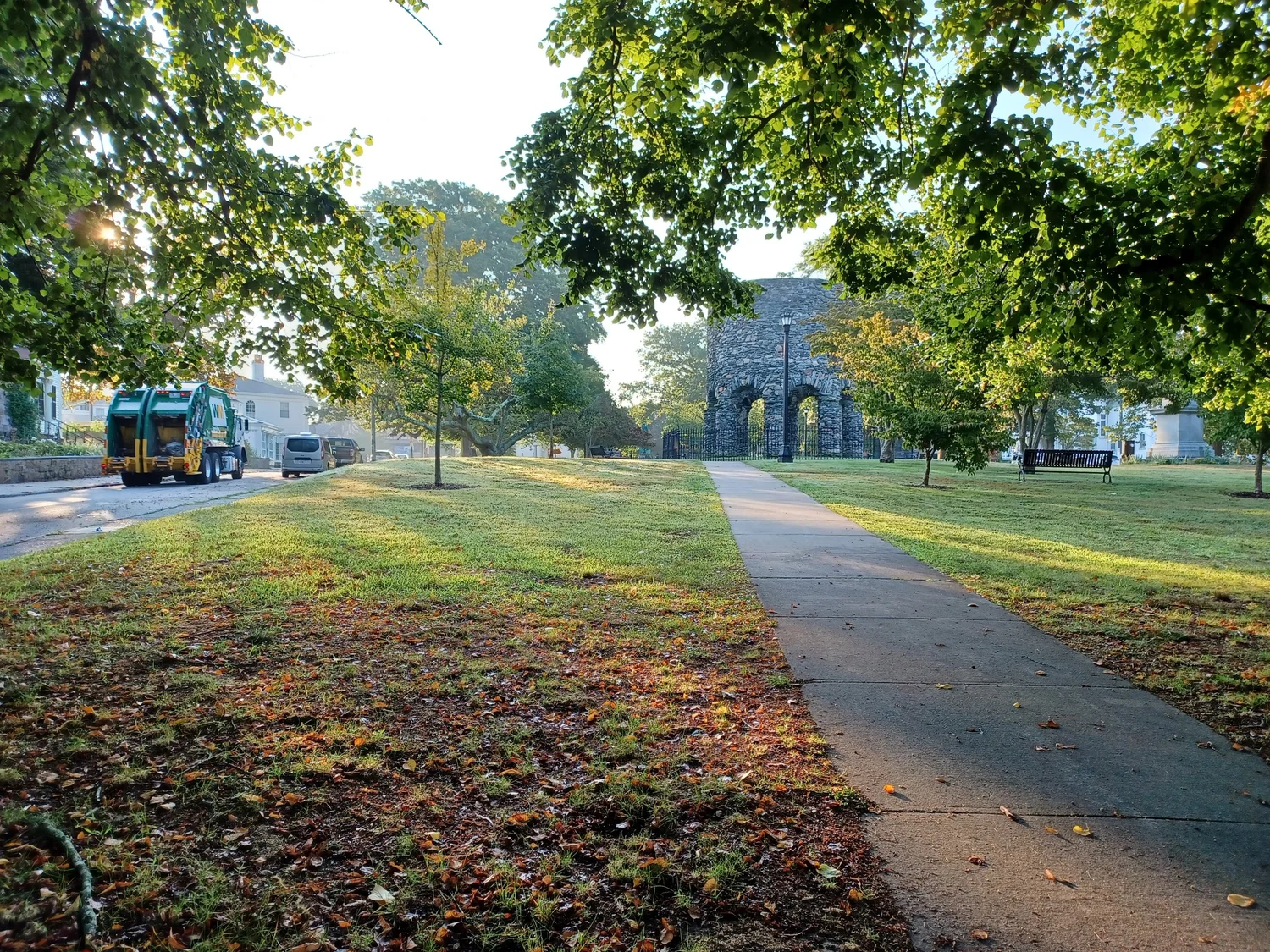Here are two sample activities for starting an AllBeforeUs curriculum:
Neighborhood walk
Students stand in a semicircle. The teacher asks them to imagine a peaceful place, then is quiet for 30 seconds. She asks them to imagine the street outside the school and is quiet for 10 seconds. She asks students to notice changes in each other’s body language. She then says it’s possible to make the street outside less stressful. She or he walks to the window and asks students to pick a direction to walk in, then to a smartboard, to show a map of where students will walk.
Students pair off and walk out. They take turns holding pads (or iPads if there’s that kind of budget).
Tick off with a counter everything that irritates you. Mark “n” for noise, "s" for smell, “u” for ugly, “d” for dangerous and “x” for just uncomfortable.
Come back, gather around a map, and count your marks. One student should put pushpins on the thing that irritated you most. If one area is very crowded, ask one or two students to step back and write qualitative words on why that place rang so foul- smell? Symbol? Blockage?
Go to tables and sit in groups. At each table, a piece of butcher paper should show a domain: feelings, wants, ideas, complications.
Talk about feelings, wants, ideas for change.
Write who’s responsible for the problem and who has that person’s attention. For an exit ticket, write or map one way to get a meeting with that person.
Systems and feedbacks
Set students up in their usual table arrangement, then change one thing. Put a chair on top of the table. Sit on the chair.
Ask students from up there:
What system have I upset?
What are the consequences?
Get down. Tell the student who has her hand up that no matter what happens, she should keep answering until you put the chair back where it belongs. Now pick one student who’s answering, begin to talk in a louder voice, so that a student has to also talk louder to be heard. Keep talking louder. Replace the chair.
Ask students to work in pairs on these questions:
What system did I upset by talking louder?
What are the feedbacks?
Now have a kid take the chair and sit in front of the room. Pair off and share out. Now have a kid open the door and stand in the hall,
Come together to define terms.
Explain: A feedback loop is a process where one action triggers a reaction that makes the first action stronger, which makes the second action stronger, and so on.
Imagine the teacher takes away your soccer ball. You’re fed up and you go down the hall to get it. On the way, you turn on the fire alarm.
How many systems are you affecting? What might happen as a result? (Turn and talk in pairs, then write and draw possible negative effects)
Now imagine the teacher takes away your soccer ball and tells you that if you do your best in civics class, you can play outside tomorrow instead of going to this class.
How many systems change? What might happen as a result? (Do the same turn and talk.)
Now discuss systems as they scale. For an exit ticket, ask each student to write or draw feedback effects of ice melting, of urban people getting more stressed, and of city governments requiring new trees or plants with each new construction site or big rehab job.
Here are pieces of the AllBeforeUs curriculum teachers can bring to build engagement:
*Model building.
Using model magic, clay, or paper and tape, work in groups of three or four to design a block that feels safe, fun and clean.
Then draw or act out what happens to the block over time.
Then negotiate who pays for what, agree on a maintenance plan, and make a stronger model.
*The traffic jam test.
Write and draw the story of what happens when one person decides to ditch his car on the interstate.
Write how you would describe the event if the ditcher were a neighbor who is always mean to you.
Write how you would describe it if the ditcher were your favorite pro athlete.
*The natural switch.
Pair off to list five things you see every day that make public life less pleasant (for example, idling trucks.) Design an app for eliminating one of these.
Sketch out the effect on streets, air, and human behavior from your app.
Find a partner to use your app to propose changes in the physical world.
*The role-play.
Write a paragraph as your character in the role-play (for example, the mayor of a small industrial city). Explain your daily systems and feedbacks.
Explain visually how your character measures value in housing, schooling, family life.
Write a memo explaining the change to the site you're targeting in terms you think another party will understand.


